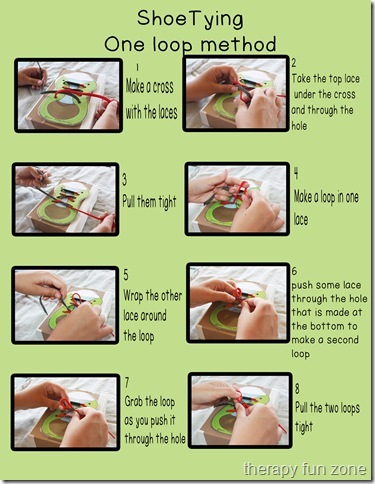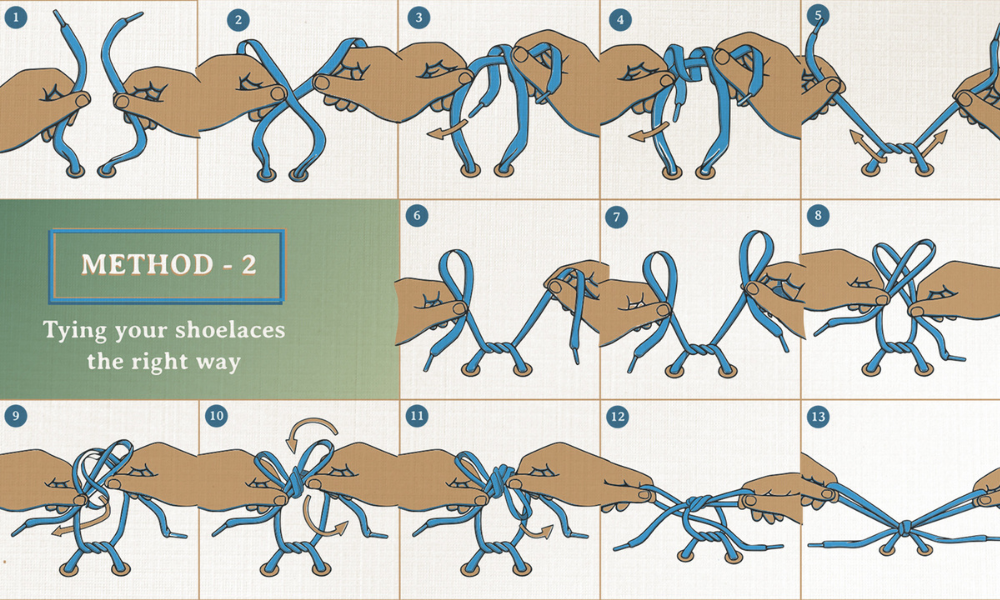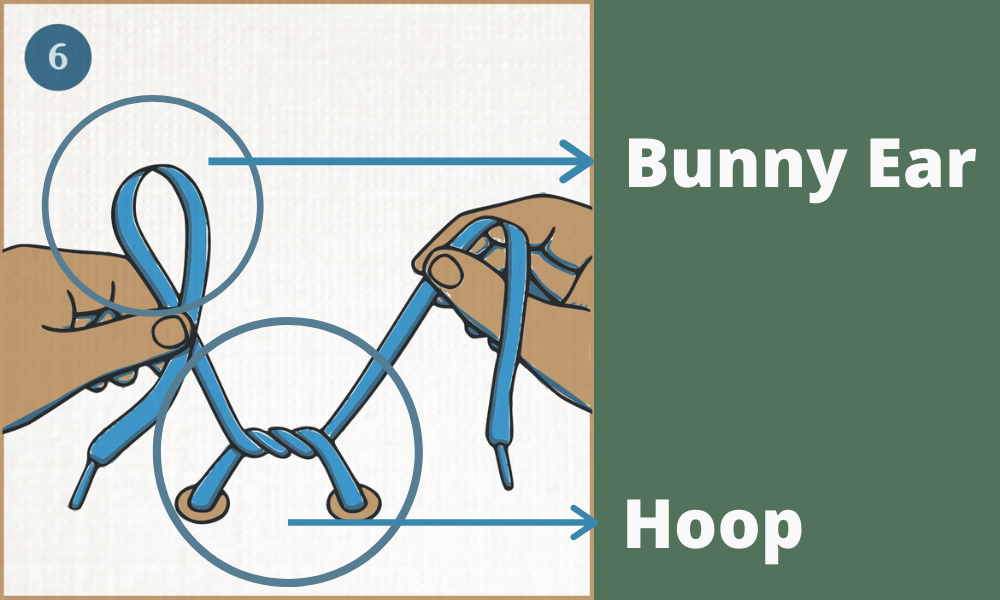Have you ever found yourself wrestling with shoelaces, trying to remember the classic bunny ears method? While it’s a familiar technique for many, it’s not the only way to secure your footwear. Whether you’re a parent teaching your child, an adult looking to simplify your routine, or a shoe enthusiast wanting to delve into different styles, this guide will walk you through how to tie your shoes without relying on the traditional bunny ears method. Let’s dive into the world of shoelaces!
The Traditional Bunny Ears Method: A Brief Overview
The bunny ears method is often the go-to technique taught to children and beginners because it’s simple and visual. In this method, you create two loops (the “ears”) and tie them together. While it’s effective for many, it may not always be the most efficient. Some individuals find it cumbersome, especially when trying to tighten their shoes enough for activities like running or sports.
Why Consider Alternatives?
Exploring different shoelacing techniques can offer several advantages. For instance, some methods provide a more secure fit, which can be pivotal for athletes. Other techniques might facilitate quicker or easier tying, especially for those with dexterity issues. Additionally, knowing multiple methods can be beneficial when tying different types of shoes, from casual sneakers to formal dress shoes.

Alternative Shoelacing Techniques
Let’s explore several effective alternatives to the bunny ears method. Each technique has its unique benefits and can be applied to various footwear styles.

1. The Standard Knot
The standard knot is a universal method that most people are familiar with. Here’s how to do it:

- Cross the right lace over the left lace.
- Wrap the right lace around the left and pull it through the hole created.
- Pull both ends to tighten.
Pros:
- Simple and effective.
- Great for casual and formal shoes.

Cons:
- May come undone during physical activity.
2. The Ian Knot

The Ian Knot is recognized as the fastest shoelace knot, ideal for those on the move. Here’s how to do it:
- Hold one lace in each hand.
- Cross them over and tuck the right lace behind the left.
- Use your fingers to loop each lace under and through to form a knot.

Pros:
- Fast and efficient.
- Stays tied well during activities.
Cons:
- Can be complex to master initially.

3. The Double Knot
The double knot is an excellent choice for ensuring your laces stay put. Follow these steps:
- Start with a standard knot.
- Take the loops and tie them together again.
Pros:
- Very secure.
- Ideal for sports or rigorous activities.
Cons:
- Can be challenging to untie.
Real-World Footwear Experiences
Let’s take a look at how these techniques play out in real life, particularly in different footwear situations.
Case Study: A Parent Teaching a Child
Consider a parent named Sarah who has a 7-year-old son, Jake, who is eager to learn how to tie his shoes. Normally, she has been using the bunny ears method, which Jake struggles with. After introducing the Ian Knot, Jake found it easier to manage and gained confidence in his ability. This success not only made getting ready quicker but also empowered Jake in other tasks requiring fine motor skills.
Case Study: The Active Runner
Another example is Michael, an avid runner. He usually opts for a double knot to ensure that his laces don’t come undone during long runs. He reports that using this method has helped him avoid the frustration of stopping mid-run to retie his shoes, enhancing his overall running experience.
Comparison of Shoelacing Techniques
| Technique | Speed | Security | Ease of Use |
|---|---|---|---|
| Standard Knot | Moderate | Moderate | Easy |
| Ian Knot | Fast | High | Moderate |
| Double Knot | Slow | Very High | Easy |
Practical Tips for Tying Shoes
Here are some practical tips to optimize your shoelace tying experience:
Choose the Right Laces
Different shoelaces can greatly affect how easily you can tie your shoes. For example, elastic laces are perfect for quick adjustments, especially for children. Flat laces often stay tied better than round laces. Investing in quality shoelaces tailored to your footwear type can enhance your tying experience.
Practice Makes Perfect
Whatever method you choose, practice makes perfect. Spend a few minutes each day practicing your preferred technique. This will build muscle memory and improve your dexterity over time. Consider using a shoe outside of your daily wear to practice without the pressure of being late or needing to be somewhere.
Product Highlights for Efficient Shoelacing
To further enhance your shoelacing experience, some products can be useful:
1. Elastic Shoelaces
- Pros: Ideal for kids or anyone who struggles with tying. They keep shoes snug without the need for tying.
- Cons: Limited customization for tightness.
2. Lock Laces
- Pros: Great for athletes; they allow for easy adjustments on the fly.
- Cons: May not fit well with all shoe types.
FAQs About Tying Shoes Without Bunny Ears
1. What is the best method to tie shoes without the bunny ears?
The Ian Knot is often recommended for its speed and security, making it a favorite among those who want a quick, reliable method.
2. Are there any benefits to not using the bunny ears method?
Yes! Alternative methods can offer improved security, speed, and adaptability for different types of footwear or activities.
3. Can children learn to tie shoes without bunny ears?
Absolutely! Many children find methods like the Ian Knot easier and more engaging, providing a sense of accomplishment.
4. How do I know which method is best for me?
Your choice depends on your lifestyle. Consider how active you are, the types of shoes you wear, and how secure you need your laces to be.
5. Is it necessary to double-knot my shoes?
Double-knotting is not necessary for everyone, but it is advisable for those engaged in high-energy activities where shoes might come undone.
6. What types of shoelaces are best for tying without bunny ears?
Flat laces often stay tied better, while elastic laces are perfect for convenience, especially for kids or those with mobility issues.
7. Can I use these techniques for formal shoes?
Yes! These techniques work well for all types of footwear. Just ensure to choose laces that match the style of your shoe.
8. How can I teach a child to tie shoes without the bunny ears method?
Start with simple methods like the Ian Knot, breaking down each step slowly, and encouraging practice to build confidence.
9. How can I avoid my shoelaces becoming untied?
Using a double knot or investing in lock laces can significantly reduce the chances of your shoelaces coming undone during activities.
10. Are alternative tying methods suitable for all ages?
Yes! Alternative methods are designed to be easy to learn and can be adapted for any age group.
Conclusion
In the end, knowing how to tie your shoes without relying on the bunny ears method opens up a world of flexibility and security. Whether you choose the standard knot, the Ian Knot, or the double knot, each method has its benefits suited to different lifestyles and footwear needs. Embrace the chance to experiment with various styles and empower yourself or your children with skills that can last a lifetime. Happy tying!